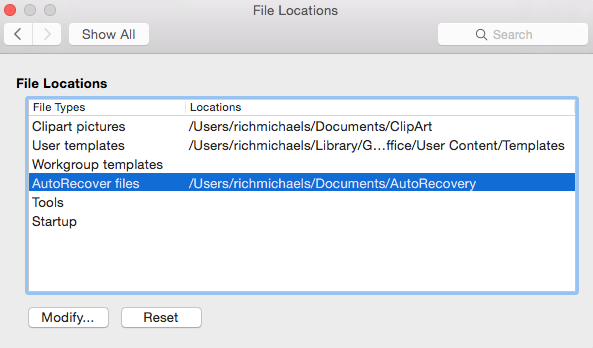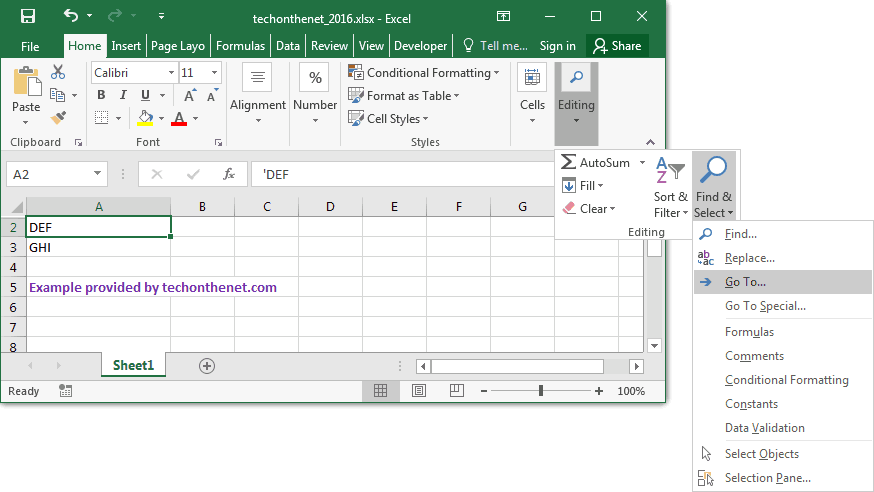
Search For Autosave Files Mac Word
You’ll try everything to recover your unsaved Word, Excel, and PowerPoint files, isn’t it? Along the similar lines, the blog highlights, both manual and software approaches to recover unsaved and deleted saved Office for Mac files in the best possible manner. Losing Important Files is Never A Good Thing Suppose you’re working on a high-priority multi-sheet Excel workbook (tracking sales record) and simultaneously preparing Word templates and PowerPoint presentations to give it a visual kick, and suddenly, out of nowhere, before saving all your files you accidentally end up closing all the windows or your Mac shuts down unexpectedly. Irrespective of how did that happen, there is a chance you can recover unsaved files. Check the Trash When files are deleted (not permanently) they can be found in the Trash.
Note If the AutoRecovery files are not in the Microsoft User Data folder, verify that the default location has not changed. To do this, follow these steps: Start Word for Mac. On the Word menu, click Preferences. Click File Locations. Note the folder location that is listed for AutoRecover files. Then, quit Word. Word 2011 for Mac looks for and opens any AutoRecover files for the document(s) that you were working on when an unexpected crash occurred. Your document opens.
Go to Trash, locate the files. Due to sudden Mac shutdown the unsaved files are lost, in such cases chances are bleak that you’ll find the lost files in Trash, however as first line of action the least you can do is Check the Trash. Methods to Restore Unsaved Office Documents on Mac • Restore unsaved PowerPoint file from the Temporary folder You can restore unsaved files from the Temporary folder (“Temp” folder) as well. For instance, while working on a PowerPoint presentation your Mac crashes before saving it, then you can recover the unsaved PowerPoint file with the help of PowerPoint temp files. Follow these steps to locate PowerPoint temp files: • Go to Applications, click Utilities > Terminal • In the Terminal windows, type “ open $TMPDIR” and hit “ Enter” • The command opens Temporary files folder.  Select the folder named ‘ ’ Temporaryitems’’ • Under ‘’ Temporaryitems ” find the required Excel file and restore. Open the PowerPoint file with ‘ TextEdit’ because a.tmp does not work with PowerPoint.
Select the folder named ‘ ’ Temporaryitems’’ • Under ‘’ Temporaryitems ” find the required Excel file and restore. Open the PowerPoint file with ‘ TextEdit’ because a.tmp does not work with PowerPoint.
For example, the unsaved PowerPoint file will be named ‘ PowerPointfile B$123.tmp’ • Restore Unsaved Word file from AutoRecover folder AutoRecovery, a built-in feature for Word in Mac is on by default. This implies that your Mac saves (Incremental saving) the files without telling you to manually do so; however, the only consideration is that you ought to initially save the Word document. AutoRecovery saves files when Mac shuts down unexpectedly, for example, power failure.
* If you haven’t saved your Word document once, you’ll lose the unsaved files, whether AutoRecover was enabled or not. To access AutoRecovery file, which is a hidden file, you need to locate hidden files and folders in order to restore unsaved Word file. With this done, open Finder and type AutoRecover in the Spotlight search box. Once you’ve found the file, open and save it again. Also, you can find files under: Users//Library/Containers/com.microsoft.Word/Data/Library/Preferences/AutoRecovery You can recover unsaved Office files for Mac with the Terminal command but have to apply your technical sophistication to prevent ambiguity. Furthermore, to recover saved files lost due to accidental deletion, unintentional formatting, and corrupt storage devices, is the most effective method. This is because the software facilitates straightforward recovery process which not only retrieves lost files with ease but saves your times as well.
Method to Restore Deleted Saved Word & PowerPoint on Mac Restore Deleted Files with Stellar Data Recovery Professional for Mac With the help of Stellar Data Recovery Professional for Mac, you can recover deleted Excel, Word or PowerPoint in just four easy steps: • Run the software • Make your selection i.e. Select the data files and location from where you wish to recover deleted files • Scan the specified location • Preview and save the recoverable files Again, the files must have been saved initially on the hard drive in order to recover them through the software. In addition to it, if you accidentally delete your data, format the hard drive, or lost files while downgrading/upgrading macOS, simply run the software to retrieve all missing files. Click Here for.